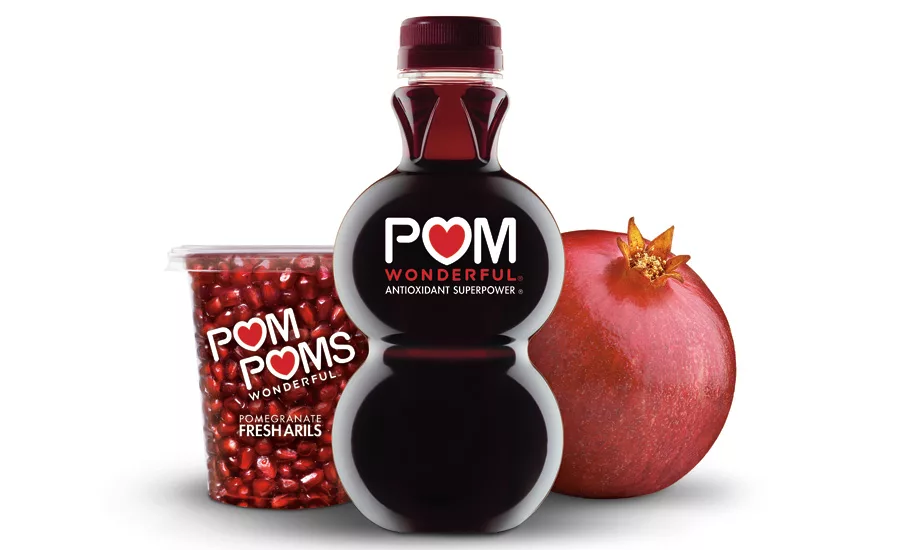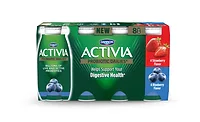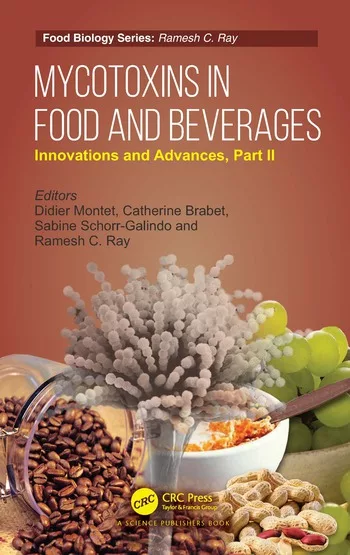Consumers’ understanding of antioxidants grows
Clean label, transparency drive need for natural antioxidant ingredients

During 2017, the beverage industry experienced a boom in the demand for functional beverages. In line with this demand, consumers also are becoming more aware of what they eat and drink, and they’re looking for products with ingredients they understand. Among those resonating with consumers are antioxidants. In fact, Memphis, Tenn.-based Evergreen Packaging’s 2016 EcoFocus Trend Study found that 60 percent of consumers were looking for beverages that are good sources of antioxidants — third only to products offering calcium fortification (63 percent) and reduced-sugar beverages (61 percent).
Further expanding on this, Adam Cooper, vice president of marketing at Los Angeles-based The Wonderful Co., highlights antioxidants’ broad appeal. “Seventy-one percent of baby boomers, 73 percent of Gen-Xers and 66 percent of millennials are all seeking antioxidants,” he says.
With this growing demand, it’s clear that consumers have become more aware and accepting of antioxidants in beverages.
“Consumers are very familiar with antioxidants, and they want to know where their food comes from,” explains Andrew Wheeler, director of marketing at FutureCeuticals, Momence, Ill. “Antioxidants naturally exist within our whole food supply allowing marketers to take full advantage of the clean-label movement.
“[Antioxidants offer] a wide range of benefits, but ultimately antioxidants protect our body’s functions from the internal and external influence of free-radicals,” he continues. “Consumers are more educated and know that in order to maximize these benefits, the quality dosage and source of the antioxidant [are] extremely important. For example, in our evaluation of phytonutrient-rich materials, we see a bell-curve effect, when antioxidant materials become pro-oxidative above a certain level. As our antioxidant research has shown us, sometimes less is more.”
The use of easily recognizable sources of antioxidants, like blueberries and other domestic fruits, also has helped to boost the acceptance of antioxidants in beverage formulations, explains Tom Payne, Industry Specialist to the Folsom, Calif.-based U.S. Highbush Blueberry Council. Blueberries often are referred to as the original superfruit and contain a variety of nutritional benefits, including antioxidants, he notes.
“[C]onsumers equate blueberries with antioxidant power and, consequently, readily accept them as an ingredient in almost any product,” Payne says. “In a sense, their inclusion gives the product a homey and familiar touch and that warm halo effect characteristic of blueberry-anything.
“… The market sees that consumers, from their health to their hedonics, no longer have to be convinced of the value of blueberries; [because] people already associate blueberries with goodness, wholesomeness and even happy memories, beverage product designers and formulators of all kinds are developing concepts and introducing products with blueberry-blue cache,” he adds.
Contributing to consumers’ growing understanding of these ingredients, beverage brands are effectively educating consumers, notes Randy Kreienbrink, vice president of marketing at Rancho Dominguez, Calif.-based BI Nutraceuticals.
“Brands are educating their consumers about antioxidants through their packaging, social media and websites,” he explains. “With today’s communication platforms, it is much easier for brands to tell their story and delve into their product’s ingredients. For instance, Bai Brands, the most popular antioxidant beverage in the market, has a webpage dedicated to explaining what antioxidants are.”
As another example, The Wonderful Co.’s Cooper highlights how POM Wonderful 100% Pomegranate Juice has marketed its product while educating consumers. He notes that the brand is launching a new marketing campaign to further consumers’ understanding.
“POM Wonderful has an integrated campaign to grow our consumer base with mass-awareness marketing unparalleled in the super-premium juice category, including a digital billboard in Times Square, TV commercials running throughout the year, and a full-year print and digital plan,” he explains. “The campaign will include advertorials in national magazines that educate our consumers on our health benefits.”
With consumers’ growing understanding of the benefits of antioxidants, beverage-makers are launching new products that highlight the functional ingredient from a variety of natural, plant-based sources across several beverage categories, experts note.
“We are seeing an expansion in fruit juices, fusion waters, energy beverages and healthy energy shots,” FutureCeuticals’ Wheeler says. “We are seeing the coffee fruit category explode, one that we founded with our Coffeeberry Cascara line of ingredients. Just look at the success of Bai, and their subsequent acquisition by Dr Pepper Snapple. They have demonstrated that a coffee fruit antioxidant-based beverage can work and how.
“We’re seeing antioxidants incorporated into plant-based dairy alternatives and cold-brew coffees, among others,” he adds. “These categories are acutely focused on natural and clean, while searching for functional ingredients that support healthy cellular function.”
BI Nutraceuticals’ Kreienbrink also notes the proliferation of antioxidants across beverage categories and highlights their inclusion in energy drinks, kombuchas and sparkling beverages.
“However, I believe the market share will always be in fruit juices and [ready-to-drink] teas,” he says.
The USHBC’s Payne notes that along with their healthy halo, blueberries are being incorporated into a plethora of beverage products, including alcohol beverages.
“Blueberries are becoming a popular ingredient in trendy wheat beers, lagers, craft beers, stouts, wine, vodkas and gins,” he says. “As an example of nutritional innovation, blueberries are being formulated into fiber drinks, which are increasing in popularity. They work well with blueberries, which make the drinks a delicious way to get natural antioxidants. In addition to tasting good, fiber beverages that contain blueberries can be positioned as real food containing natural antioxidants, not synthetic elements manufactured in a lab.”
Clean and functional
In line with this desire for easily understood and natural antioxidant ingredients is the desire for clean-label products. With this trend, transparency is key for beverage-makers playing in this arena, experts say.
“As American consumers increasingly search for clean-label, healthy ingredients/functional beverages, natural, plant-based antioxidants are taking more of the overall market share,” FutureCeuticals’ Wheeler explains. “This is driven by the supply chain consciousness mindset — consumers are demanding to know where their food and beverages come from and are seeking a cleaner, more transparent label. They demand real, minimally processed, safe and eco-friendly ingredients.
“… The category has expanded from synthetic and high-phenolic/processed extracts to real food antioxidants,” he continues. “Clean label has also challenged the antioxidant category, once very quiet about its supply chain and bombarded by adulteration concerns. By pulling back the curtain and sharing the product’s journey with the consumer, the trust bond is strengthened.”
As consumers are demanding cleaner labels and more transparent sourcing, beverage-makers should be attentive to these demands, The Wonderful Co.’s Cooper says.
“As consumers get smarter about their food labels, brands have to adhere to higher standards, and that really helps drive trends in natural and clean-label foods and beverages,” he explains. “Consumers are also looking for healthy options and ways that they can incorporate foods that add benefits to their overall well-being.”
To help beverage-makers create new antioxidant beverages, FutureCeuticals offers two natural solutions: Coffeeberry Cascara and Spectra, Wheeler says.
“For millennials, food transparency and the re-purposing or minimizing of food waste are major drivers in their desire to seek food that is both healthy for them and the planet. FutureCeuticals addresses both [of] these desires by offering a plant-based antioxidant ingredient called Coffeeberry Cascara,” Wheeler says. “Cascara means ‘husk or skin’ in Spanish, which is the dried skin of the coffee cherry, once a waste stream of the traditional coffee process. FutureCeuticals partners with organic, Rainforest Alliance and Fair Trade-certified farms to preserve the coffee fruit along with its natural phenolic compounds like proanthocyanidins, chlorogenic acid and quinic acid for the benefit of human health.
“On the other hand, consumers are also seeking antioxidant products supported by clinical science,” he continues. “Spectra goes beyond antioxidant potential and demonstrates a new frontier in antioxidant science by documenting real, antioxidant action in the human body. A blend of natural ingredients, Spectra has been scientifically shown to inhibit free-radical production, optimize cellular metabolism and increase nitric oxide levels within the body.”
When it comes to choosing a naturally sourced, plant-based antioxidant ingredient for a beverage formulation, beverage-makers can choose from three main categories: fruits, teas and botanicals, BI Nutraceuticals’ Kreienbrink notes.
BI Nutraceuticals offers a diverse portfolio of natural antioxidant ingredient solutions, he adds.
“We offer dozens of ingredients with antioxidant properties, from whole powders (guayusa powder) to standardized extracts (grape seed powder extract 95 percent [oligomeric proanthocyanidins]) and from fruits (acerola) to teas (green tea) to botanicals (rosemary),” Kreienbrink says.
Yet, antioxidant characteristics aren’t the only reason beverage-makers are turning to these ingredients. Many antioxidant solutions provide additional benefits to functional, clean-label beverages, notes Kreienbrink.
“The mainstream trend of clean label has been influencing all food and beverage segments, including the antioxidant ingredient market,” he explains. “Whole foods that inherently contain antioxidants, such as acerola and cranberry, are used in beverages for [their] antioxidative properties. Green tea powders and extracts are also very popular, especially extracts that are standardized to either polyphenols or [epigallocatechin gallate] levels. Also, many companies are turning to antioxidants, such as acerola and rosemary, to naturally fight oxidation (natural preservative).”
On top of fighting oxidative stress, some ingredients can provide an additional functional benefit, like turmeric, which also can fight inflammation, Kreienbrink says.
In line with this, The Wonderful Co.’s Cooper explains that pomegranates also are a good source of potassium, which increases the value-added benefits of these ingredients.
“[F]rom a marketing standpoint, the antioxidant power of POM Wonderful 100% Pomegranate Juice is a key differentiator. In addition to antioxidants, an 8-ounce bottle of POM 100% juice has as much potassium as a medium banana, and potassium is a key electrolyte for healthy muscle function,” he explains. BI
Looking for a reprint of this article?
From high-res PDFs to custom plaques, order your copy today!








